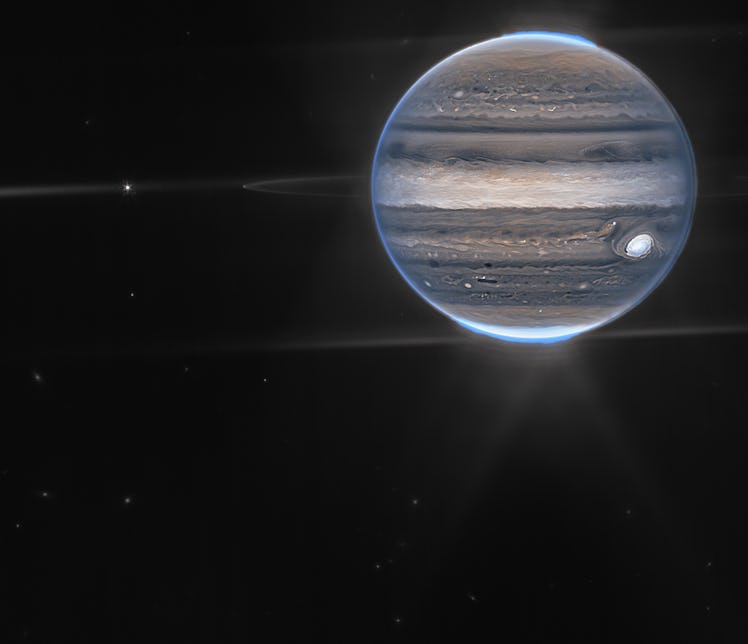This Mind-Blowing JWST Photo Of Jupiter Features A Ton Of Stunning Easter Eggs
After a year full of incredibly stunning images, the team at NASA has done it again with a gorgeous color photo of Jupiter.

The James Webb Space Telescope (JWST) has done it again! After a year full of incredibly stunning images, the team at NASA has published yet another mind-bending photo — this time, a gorgeous color photo of Jupiter.
"We hadn't really expected it to be this good, to be honest," said planetary astronomer and UC-Berkeley professor Imke de Pater, per NASA. "It's really remarkable that we can see details on Jupiter together with its rings, tiny satellites, and even galaxies in one image."
The image is incredible, and there are some pretty cool Easter eggs and amazing fun facts when it comes to the making of the image, too.
1. The view of Jupiter is formed from several images.
NASA explained that the telescope doesn’t work the same way our cameras do, so the photo of Jupiter had to be processed so we could see it.
Several images were composed and stitched together, and that’s how they’re able to get the gorgeous, full-color look of the planet.
2. The images had to be colored artificially so we could see them.
Now, to get the colored version of Jupiter, the astronomers had to create composites using different filters so we could see them. According to NASA, the images were infrared, so they were artificially colored to make the features visible.
“The auroras shine in a filter that is mapped to redder colors, which also highlights light reflected from lower clouds and upper hazes,” NASA explains. “A different filter, mapped to yellows and greens, shows hazes swirling around the northern and southern poles. Finally, a third filter, mapped to blues, showcases light reflected from a deeper main cloud.”
3. The Great Red Spot, though beautiful, sounds terrifying.
The Great Red Spot, which has become iconic for Jupiter, may be beautiful, but it’s terrifying. NASA says it’s really an enormous storm that "could swallow Earth.”
In the photo, the Great Red Spot looks white, which “indicates high altitude – so the Great Red Spot has high-altitude hazes, as does the equatorial region," said Heidi Hammel, vice president for science at the Association of Universities for Research in Astronomy, per NPR.
4. The white spots and streaks show something, too.
There are a lot of varying colors and streaks going through Jupiter, and each means something. The bright white “spots” and “streaks” are very high-altitude convective clouds.
The darker areas of Jupiter indicate where there’s very little cloud cover, NASA explains.
5. You can see the planet’s rings, two moons, and a photobomb.
On top of the really cool photos of Jupiter are wider view shots showing what’s hanging out around the planet. You can see the planet’s faint rings and the two moons in one photo. Amalthea is the spot to the far left, while Adrastea is closer to Jupiter.
NASA says that the fuzzy spots in the lower background are likely galaxies “photobombing” the view.